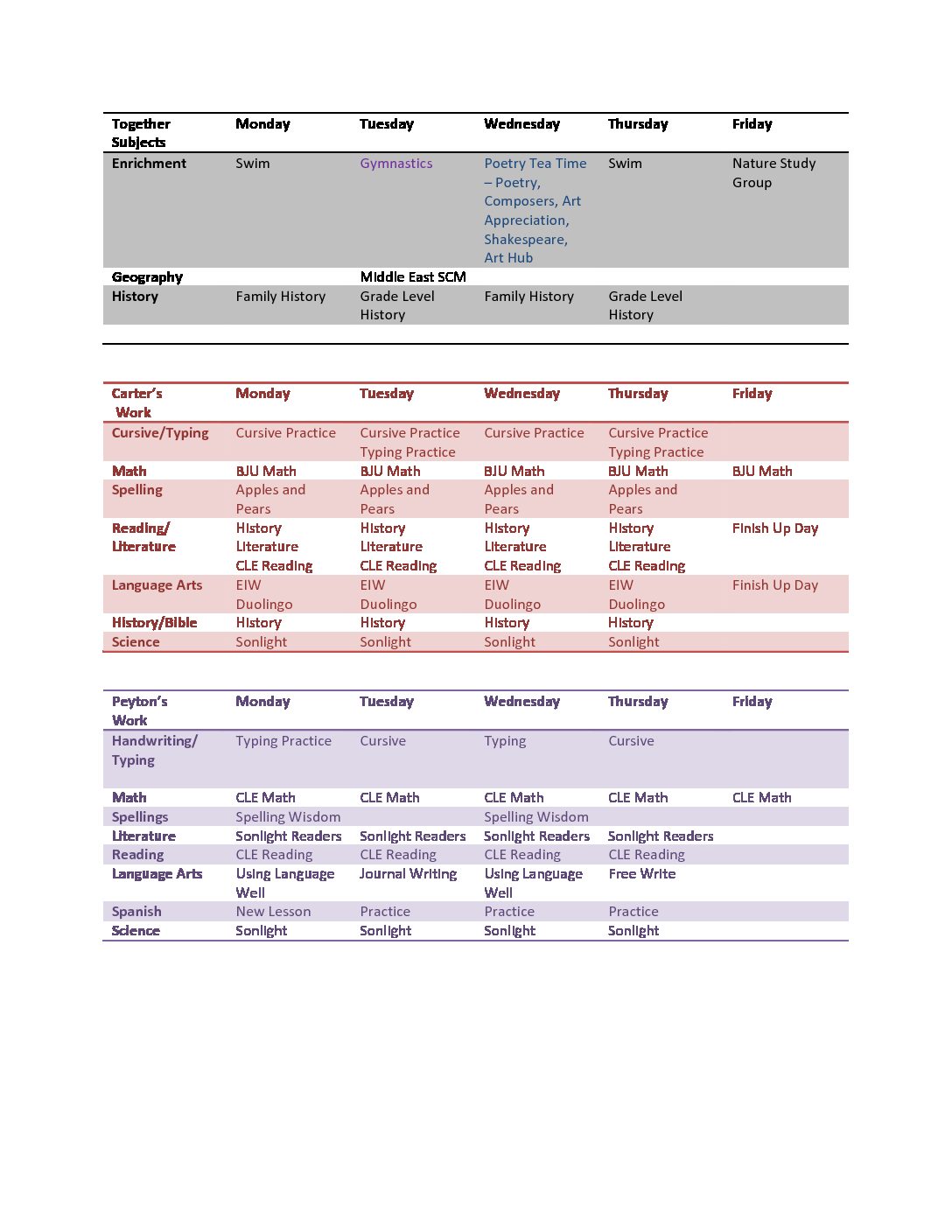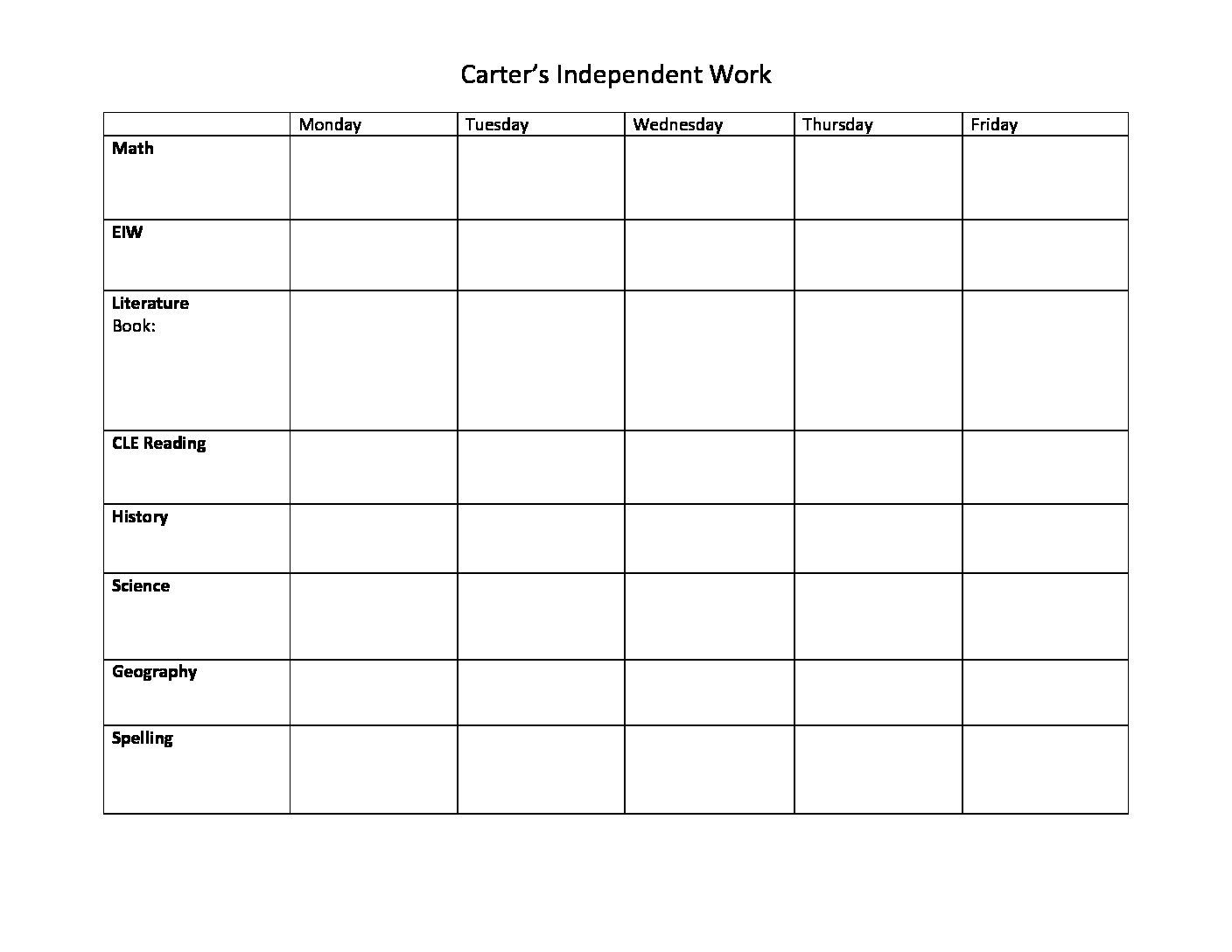After you choose your curriculum and decide what your yearly schedule will look like, it’s time to get into the details of planning what your homeschool daily schedule will look like. Your curriculum will play a huge role in how you plan your daily schedule so don’t try to plan your days until you have chosen your curriculum. In you are a non-planner (that’s me) keep reading. I will show you how to use routines to provide you some structure to your homeschool days without the rigidity of needing to stick to a plan.
I always prefer to start with the big picture, so I start with the yearly schedule, then a weekly overview, then the daily schedule.
This post contains affiliate links, including Amazon associate links. If you purchase through my links, I may be compensated. Thank you for supporting this site! You can read my affiliate and advertising disclosure here.
Weekly Schedule
Start with a weekly overview. Your curriculum choices will help make this decision. Depending on the publisher, some subjects need to be done five days a week in order to finish in a year, others only require two or three days. If you plan to do every subject every day, you can skip putting together your weekly schedule. This year I am using Sonlight so I don’t have to do any weekly planning, but last year I pieced things together so it took a little bit of planning. I will give you an example of what a weekly overview looks like when you don’t do every subject every day.
Monday: Math, Language Arts, Typing, Spelling, History
Tuesday: Math, Language Arts, Handwriting, Science
Wednesday: Math, Language Arts, Typing, Spelling, History
Thursday: Math, Language Arts, Handwriting, Science
This gives you a general idea of a weekly overview. We usually do more work than this in a day, but this is just a quick example. Usually you will do skills subjects every day, but content and dessert subjects are a little more flexible. Try to split up written work so that it is spread out throughout the week. Below is the master weekly schedule I made for us a couple years ago. This helps me stay on track so we don’t forget any of our subjects.
Daily Schedule
Once you have your weekly overview, you can start scheduling your days. There are a few different ways to do this. I prefer to plan a daily routine rather than schedule hour by hour, but you can do whatever works for your family. If you want to schedule hour by hour, you need to decide how long each subject should take, then start blocking out your schedule. Don’t forget to schedule in breaks and snacks. Homeschooled kids are big fans of snacks, and second breakfasts, so keep that in mind in your planning. A daily schedule might look something like this.
8:00 Math
9:00 Language Arts
9:45 Break
10:00 Typing
10:20 Spelling
10:50 Break
11:05 History
11:45 Finish Up Incomplete Work
Daily Routine
I enjoy the flexibility of a daily routine, not a schedule. I let my kids sleep in if they need to, so we don’t have a set start time in the morning. Here is an example of what our daily routine looks like.
Wake Up, Eat Breakfast, Get Ready to Start the Day
Brain Gym Exercises
Read Aloud
Group Work
Independent Work (They choose the order of subjects)
By doing all of the group work first, they are free to take as much time as they need to complete their independent work. I give each of the boys a copy of the weekly overview for their independent work, along with a list of daily lessons for the week. You can see what their daily lessons list looks like (say that ten times fast) below. The grid schedule gets laminated and I fill in the spaces with a wet erase marker. I have two of these grids for each kid so I can fill them in ahead of time.
Remember there is no perfect schedule or routine, and no right way to do this. There are good reasons that your family might thrive with a schedule, and good reasons you might thrive with a routine. Finding what works for you will come from some trial and error, but that’s all good. Homeschooling is a learning experience for the whole family and you can learn from your failures and your successes. If something doesn’t work, keep going. You will figure this out.
I am always happy to help you start your homeschool adventure. Feel free to email me or connect with me on social media.



